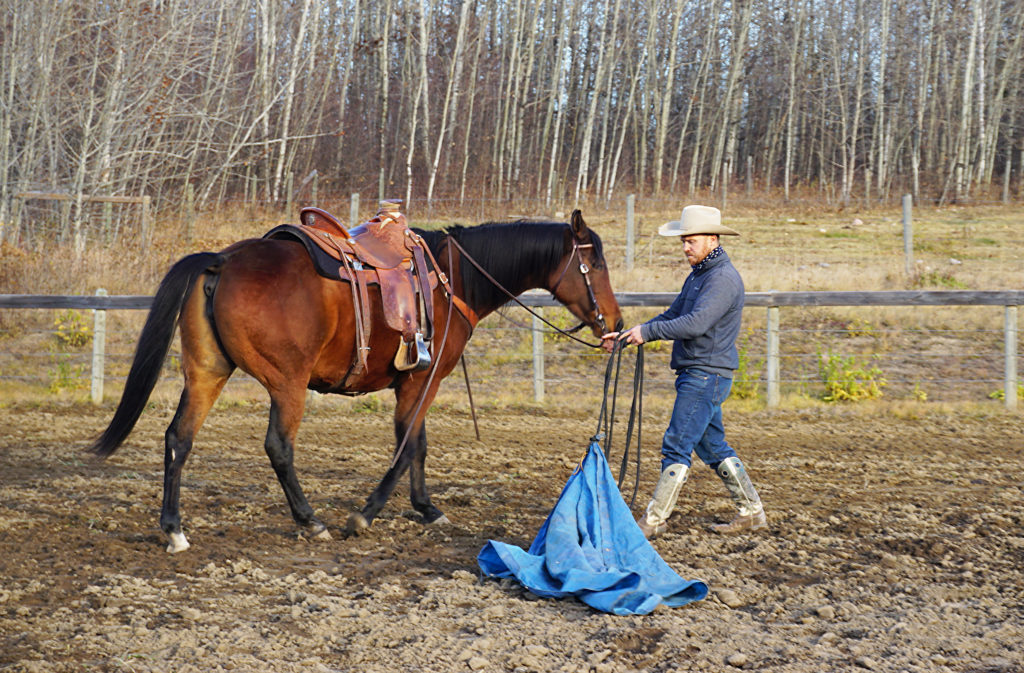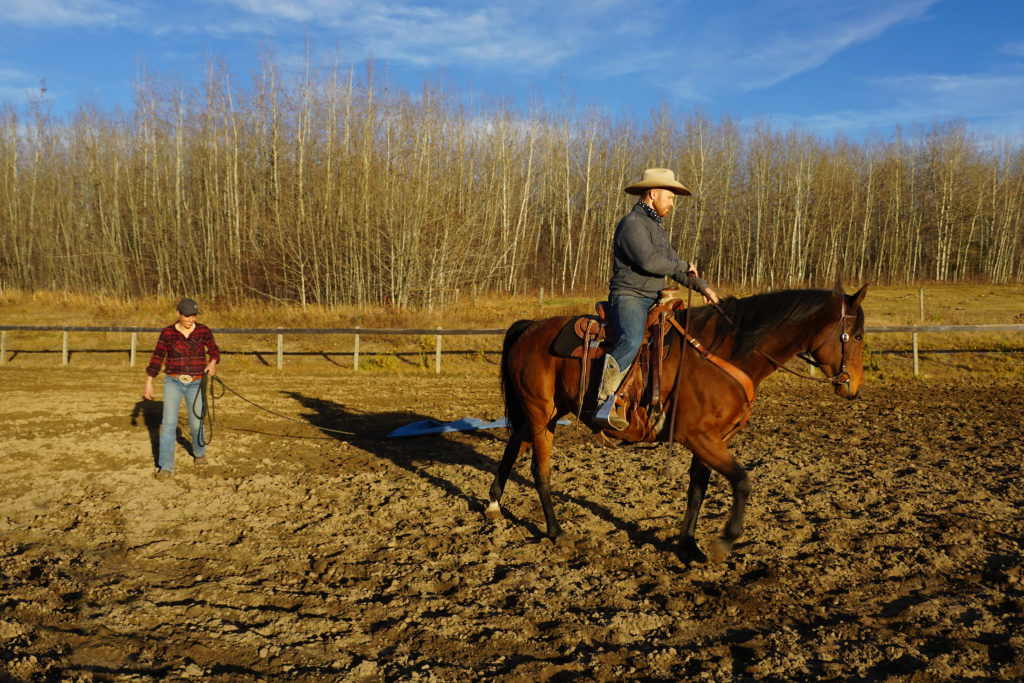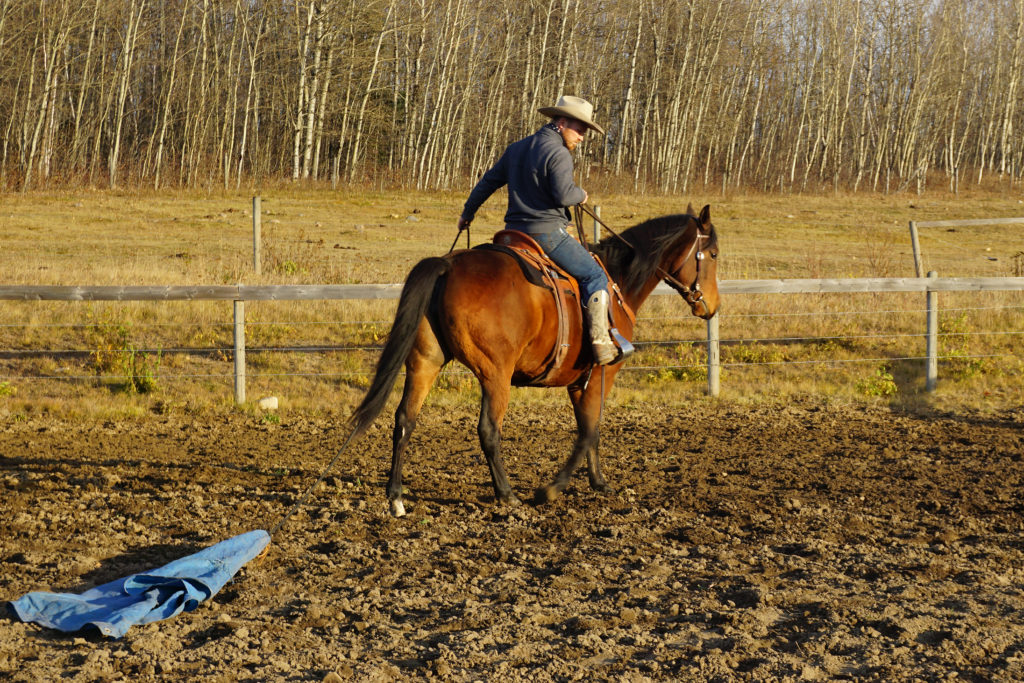In my previous blog post, we looked at some confidence building exercises you can do with a helper dragging a tarp. Once the horse is comfortable with your helper dragging the tarp behind him, you will move to the next step: taking control of the tarp yourself and dragging it without a helper. When I have control of the tarp, I will walk straight lines and also make turns and circles around the tarp. When circling around the tarp, the tarp stays to the inside, well away from the horse, and the rope does not touch him.
However, I will eventually want to start circling the other direction, which means that the tarp is going to cross behind the horse and appear in his other eye, and the rope may also touch his hind end or legs. It is therefore very important to have done some work getting your horse comfortable with ropes touching him around the back end before doing these tarp exercises, as you don’t want the feel of a rope to be new and scary too. It is also critical for your own safety to be sure that there is spatial clarity between you and the horse before you do this exercise on the ground. This means that all the parts of the horse — shoulders, hips, barrel, will soften away from you when you ask them to, and there is no sense that the horse would move through you if he was worried about something on his other side.
When your horse no longer worries about the tarp during these ground exercises, it is great to work on them mounted as well, as long as you already have the ability to get a soft response from your horse when you ask for a change. I recommend starting at the beginning again, just following the tarp while it’s being pulled by a helper, and circling back as needed. Once you are sure that the horse feels confident doing that with you in the saddle, moving on to riding beside the tarp, then to dragging the tarp yourself and circling in both directions. Remember that in both the ground work and the mounted exercises, you want to practice having the tarp on both sides. Don’t be surprised if one side is easier for the horse than the other, as this is quite common.
While these tarp exercises are just a starting point, a horse that has been well guided through this type of mental development work is in a good position to handle other unfamiliar situations with confidence. Whether the scenario is seeing cattle for the first time or negotiating a new kind of trail obstacle, a horse that can think through pressure and remain in control is a horse you will want to ride.

Once your horse is comfortable with the various exercises when the tarp is being pulled by your helper, the next step is to pull the tarp yourself. Be aware that the tarp may cross behind the horse and the rope could touch his legs, so you need to prepare the horse for such possibilities.

Having your helper drag the tarp while you ride and essentially “starting over” is the best way to transition into the ridden tarp work.

Finally, when the horse is comfortable with you riding and your helper dragging the tarp, you can start dragging the tarp yourself.
Josh

I appreciate that you stress all the ground work that needs to be in place before you introduce the tarp.